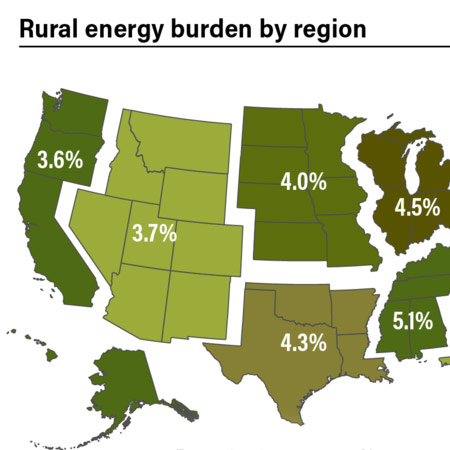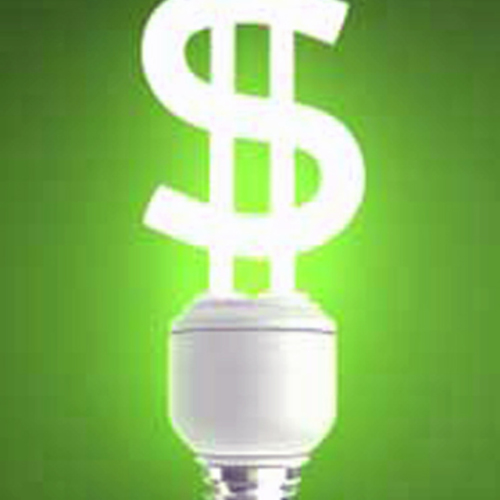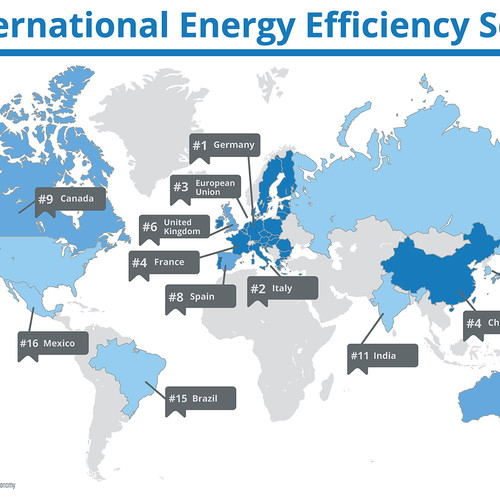
Image Credit: ACEEE
Paying for increased energy efficiency is two or three times less expensive than adding new electrical generating capacity, two recent studies have found.
As reported by Midwest Energy News, the average cost of saving energy was between 2 cents and 2.8 cents per kilowatt hour, two or three times less than adding wind, natural gas, coal, or other generating facilities.
The separate studies were produced by the Lawrence Berkeley National Laboratory and the American Council for an Energy-Efficient Economy. Both studies looked at the levelized cost of saved energy, which is the cost per kilowatt hour when the initial cost of the efficiency measure is spread over the lifetime of the investment, Midwest Energy News said.
The Lawrence Berkeley study pegged the average cost of saving energy at 2 cents/kWh, while the ACEEE study found it to be 2.8 cents/kWh.
But there were regional variations. In states where efficiency programs are relatively new, as they are in parts of the Midwest, low-cost programs such as getting consumers to use high-efficiency light bulbs, kept the cost of efficiency below 2 cents/kWh. By contrast, in California, Connecticut and Massachusetts — where low-cost measures have already been adopted — the cost of new efficiencies exceeded 4 cents/kWh.
“As programs get more aggressive, they are more expensive,” Rebecca Stanfield, deputy director for policy at the Natural Resources Defense Council, told Midwestern Energy News. Even so, “they’re not more expensive than generation.”
The ACEEE study found that spending on efficiency programs rose from $1.6 billion in 2006 to $4.8 billion in 2011, the report said.
Weekly Newsletter
Get building science and energy efficiency advice, plus special offers, in your inbox.















3 Comments
Exxon Agrees with Energy Efficiency
Exxon agrees that the greatest source of energy in the future is our ability to use it more efficiently.
"Energy efficiency technology will save 500 quadrillion British thermal units over the next 30 years, said Ted Pirog, an energy analyst with Exxon Mobil Corp."
http://www.bizjournals.com/houston/news/2014/04/24/biggest-energy-source-for-the-future-isnt-oil-and.html
Not so useful information
I find this article and the report by LBL behind it not so useful. If one is building a new house, the first R-10 of insulation that takes the ceiling from R-0 to R-10 has a very low cost per kWh saved. The same R-10 insulation that takes the ceiling from R-100 to R-110 has a very high cost per kWh saved.
It is well known that some amount of insulation has very good cost efficiency. The real question is once the house is insulated to the code minimums or beyond, at what point are further expenditures better invested in energy generation than in further conservation. The use of a computer model like BEopt provides guidance, while I do not see such guidance from this article.
Another point is that the cost for generation of electricity by solar PV of $0.10/kWh may be a good average for the U.S., but here in sunny Colorado, the costs for systems installed in 2010 are running about $0.06 to $0.08/kWh (http://www.residentialenergylaboratory.com/comparison_of_pv_systems.html). CostS for solar PV are continuing to drop, although subsidies are also dropping.
Response to Lee Dodge
Lee,
If you read Scott's article more carefully, you'll see that your point about diminishing returns was considered and taken into account by the researchers.
Scott wrote:
"In states where efficiency programs are relatively new, as they are in parts of the Midwest, low-cost programs such as getting consumers to use high-efficiency light bulbs, kept the cost of efficiency below 2 cents/kWh. By contrast, in California, Connecticut and Massachusetts — where low-cost measures have already been adopted — the cost of new efficiencies exceeded 4 cents/kWh.
" 'As programs get more aggressive, they are more expensive,' Rebecca Stanfield, deputy director for policy at the Natural Resources Defense Council, told Midwestern Energy News. Even so, 'they're not more expensive than generation.' "
Log in or create an account to post a comment.
Sign up Log in